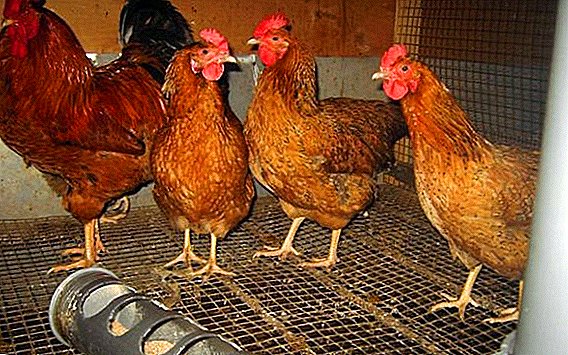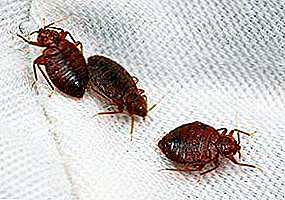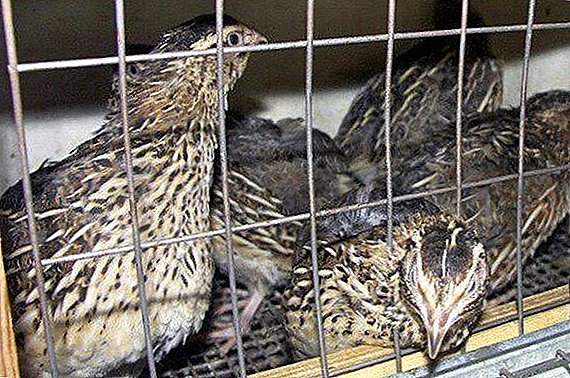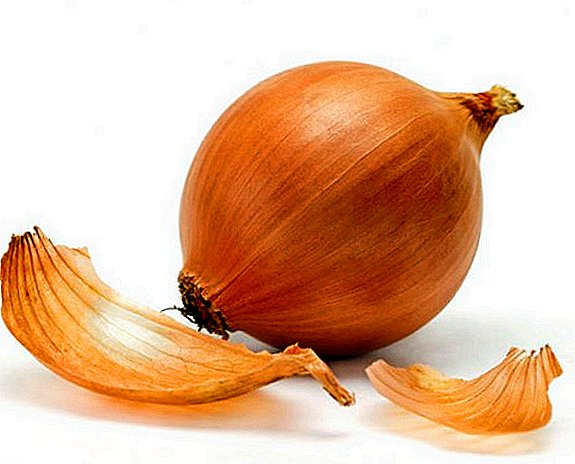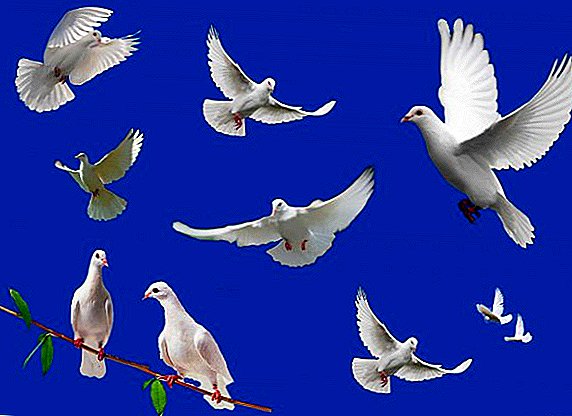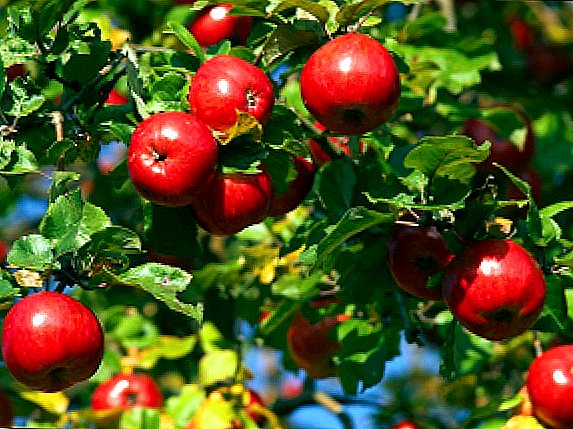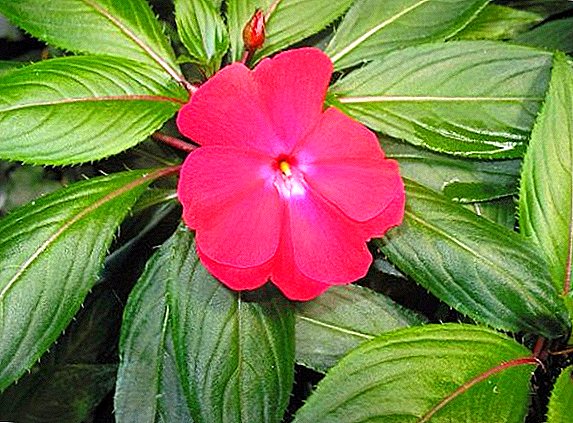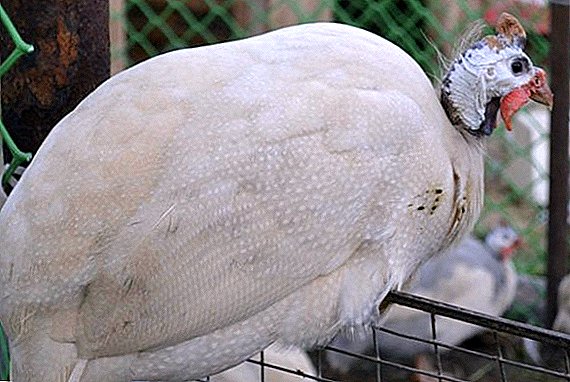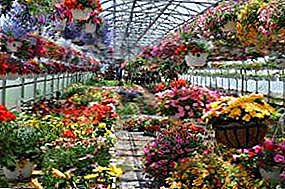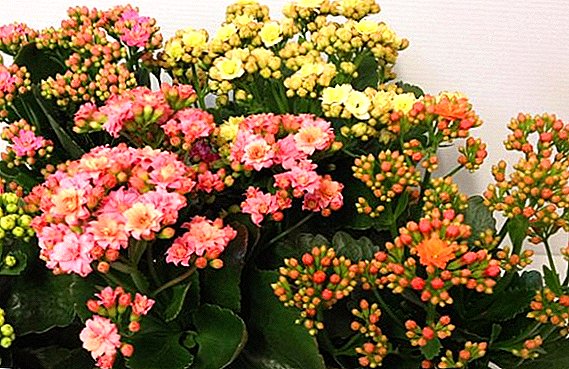 Kalanchoe Kalandiva very common plant due to its unpretentiousness and long flowering. Homeland Kalanchoe is Africa, it has decorative and medicinal properties. This species is also called Kalanchoe Kalandiva mini, and in general there are more than 200 plant species in the world.
Kalanchoe Kalandiva very common plant due to its unpretentiousness and long flowering. Homeland Kalanchoe is Africa, it has decorative and medicinal properties. This species is also called Kalanchoe Kalandiva mini, and in general there are more than 200 plant species in the world.
Did you know? This type of Kalanchoe, like Kalandiva mix, can bloom for more than six months, and its flowers are very bright and varied in color.
Description of Kalanchoe Kalandiva
Kalanchoe Kalandiva - It is a succulent plant of the Crassula family, it reaches a height of 40 cm.
The stem and its shoots are fleshy, the leaves are mainly located on their tops. The length of the leaf is about 5 cm, width is about 3 cm, the color is dark green, there are rounded teeth along the edges. Opposite leaves are rounded or ovate.  The description of the Kalanchoe Kalandiva flowers is as follows: they are gathered in racemes at the top of the plant, double and upright flowers have a diameter of about 1 cm.
The description of the Kalanchoe Kalandiva flowers is as follows: they are gathered in racemes at the top of the plant, double and upright flowers have a diameter of about 1 cm.
The flowers of Kalandiva do not fade for about a month, new ones appear in their place for a short time, so on average bloom lasts up to six months (February-July).
Did you know? The color of Kalanchoe flowers is varied: it can be white, yellow, purple, orange or red.
After the end of flowering at Kalanchoe Kalandiva - a dormant period, which is characterized by the need to restrict watering, besides, it is better to place the plant in a cool and less lit place. After this important period, if all conditions are met, Kalanchoe blooms again. 
Conditions of the Kalanchoe Kalandiva
If you want to grow Kalanchoe Kalandiva at home, then it is important to follow a few simple rules in order to create acceptable conditions for it.
Lighting for growing
The success of budding depends on the observance of a certain light mode. Kalanchoe Kalandiva loves bright light and is not afraid of direct sunlight, so the most suitable place for a pot with this flower will be the south side of the house.
If the plant is located on the east or west side, the flowering will be rare or absent, and the shoots - elongated and with a large distance between the leaves.  With a lack of natural light (for example, in cloudy weather), artificial lighting should be used.
With a lack of natural light (for example, in cloudy weather), artificial lighting should be used.
Temperature conditions
Temperature, optimum for good development, Kalanchoe - 23-27 ° C. The plant can easily tolerate hot weather (temperatures above 35 degrees), and cooling to 14-16 degrees in the autumn-winter period.
Compliance with these temperature conditions will help the plant when laying buds, promoting good and timely flowering.
Air humidity requirements
Kalanchoe Kalandiva tolerates dry air. Spraying it is not required. You can wipe the leaves and stem of the plant from dust twice a month with a damp sponge or wash it once a month with warm water under a shower.
Other types of Kalanchoe, such as Degremona and Blossfeld, can also be your home decoration.
Features of the cultivation of Kalanchoe Kalandiva, care for the flower
Caring for Kalanchoe Kalandiva at home is quite simple, you need to follow a few standard rules so that the plant will delight you with its bright colors.
Watering rules
Kalanchoe Kalandiva does not like too much moisture, which can lead to death of the plant due to rotting of the roots.  Watering is carried out when the ground is dry on top. Water is best to defend or take filtered, it should be soft and not cold.
Watering is carried out when the ground is dry on top. Water is best to defend or take filtered, it should be soft and not cold.
In winter, the plant need water no more than once a week or even better in 10-12 days, and in the summer - every 5-6 days. It is necessary to ensure that excess water does not stagnate in the pan, it must be poured out in order to prevent overmoistening, which can cause disease of the plant.
Kalanchoe is great for bedrooms and children's rooms.
Top dressing of a flower
You need to feed the Kalanchoe Kalandiva flower regularly - every 10-15 days. Top dressing during flowering and bud formation is important, but it is worth choosing phosphate-potassium preparations or special fertilizers for succulents. Top dressing is added to the water intended for watering.
Do not often feed the plant and use for this fertilizer containing nitrogen, as this will lead to the growth of shoots and leaves, while flowering will decrease and slow down. 
Pruning Kalanchoe
Owners of Kalanchoe Kalandiva often have a question: should this flower be cut? During the year the plant can grow up to 30 cm in height and width, so pruning is necessary.
When a young plant Kalanchoe Kalandiva only begins to grow, it needs pinch (cut 1-2 top leaves from the branch). During active vegetation, the upper part of the shoot can be cut until the desired bush shape is achieved.
After flowering, it is necessary to cut flower stalks at the base, which will lead to the growth of new shoots.
Important! Before cutting the Kalanchoe Kalandiva, make sure that the instruments you want to use are sharp enough and disinfected. This is important for plant safety. One pruning should capture no more than ¼ of the volume of leaves and shoots.
If you decide to form a miniature tree from the flower Kalanchoe, for this you need to choose the strongest stem (stem), remove its side shoots, while leaving the top. Further, after the plant reaches the desired height, the top is pinched, and the lower part remains free from shoots.
Proper Kalanchoe Transplant
The question is important: how to properly transplant the Kalanchoe Kalandiva plant after purchase. Young plants under the age of three years are transplanted every year in spring; adult plants need to be transplanted as the root system grows - every two to three years.  When Kalanchoe is required, in which pot is it better to plant the plant? It should be 1-2 cm wider than the previous one. The soil in which the plant was sold does not contain nutrients and therefore is not suitable for Kalanchoe. Before transplanting, it should be completely rinsed from the roots with warm water. As a new soil, you can use a universal substrate for succulents, sold in specialized stores.
When Kalanchoe is required, in which pot is it better to plant the plant? It should be 1-2 cm wider than the previous one. The soil in which the plant was sold does not contain nutrients and therefore is not suitable for Kalanchoe. Before transplanting, it should be completely rinsed from the roots with warm water. As a new soil, you can use a universal substrate for succulents, sold in specialized stores.
Drainage at the bottom of the pot for Kalanchoe is necessary, its layer should be 1-2 cm.
If you want to prepare the ground for the flower Kalandiva independently, you can use the following by proportions:
- 4 parts of universal soil and 1 part of river sand
- humus, peat, turf ground, sand, leaf earth - in equal parts.
Important! Transplant Kalanchoe after purchase produced after the plant is completely flowering.
Methods of breeding Kalanchoe Kalandiva
For Kalanchoe Kalandiva characteristic reproduction of the leaf or cuttings.
When choosing a source for the future plant, you need to be very careful: the best option would be stalk or leaf from a young shoot. Using a disinfected instrument, you must carefully cut off the selected cutting (with leaves) and place it in water.
Also, before breeding Kalanchoe Kalandiva, it is necessary to shorten old shoots to 7-8 cm.
Did you know? It happens that at the edges of the leaves of Kalanchoe there are children who can take root on their own.Rooting plants in the water will happen faster, but you can plant cuttings in the soil. For this suitable peat or wet sand. Planting depth - about 1.5-2 cm. Planted cutting or leaf should be covered with a transparent container.
 The roots are formed after 7-10 days, after which you need to transplant Kalanchoe Kalandiva in a separate pot. The development of a new plant will be better held in the nutrient soil.
The roots are formed after 7-10 days, after which you need to transplant Kalanchoe Kalandiva in a separate pot. The development of a new plant will be better held in the nutrient soil.Major flower diseases and pests
Improper care for Kalanchoe can lead to his illness. Excess moisture when watering provokes the appearance of rot, and insufficient watering leads to the fact that brown spots appear on the leaves of the plant. In addition, such spots, and then leaf fall, can be a sign of a viral or bacterial disease of Kalanchoe.
Inadequate illumination leads to yellowing and falling off of the leaves of Kalanchoe Kalandiva, while it is necessary to rearrange it as soon as possible to a place with good lighting.
If the soil in which the Kalanchoe grows is not rich in nutrients, the plant can also lose leaves. In this case, feeding is necessary.  Black spots on the leaves means that the kalanchoe struck the fungus due to excessive watering or exposure to low temperatures. Treatment implies the need to transplant a plant to another pot. When you transplant Kalanchoe, you need to replace the ground and cut off all the leaves affected by the parasitic fungus.
Black spots on the leaves means that the kalanchoe struck the fungus due to excessive watering or exposure to low temperatures. Treatment implies the need to transplant a plant to another pot. When you transplant Kalanchoe, you need to replace the ground and cut off all the leaves affected by the parasitic fungus.
If aphid appeared on the Kalanchoe of Kalandiva, it is necessary to use an insecticide to control it.
Often the question arises: why does Kalanchoe have soft leaves? This kind of trouble can be caused by the wrong mode of watering the plant, which means that it is necessary to normalize it in order to preserve the health of the Kalanchoe.
Kalanchoe Kalandiva is distinguished by unpretentious care, the flower loves lighting, moderate watering, and because of the growth it needs to be transplanted at home, which is not difficult. Fulfillment of these conditions will ensure long flowering of the plant, which, undoubtedly, will please you.


